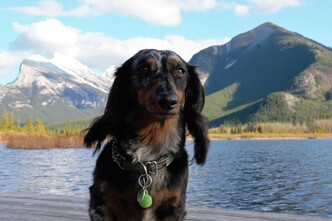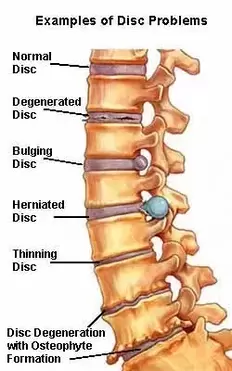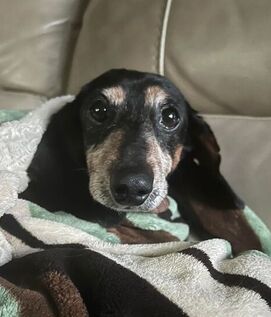|
This last year has been overwhelming for Alberta Dachshund Rescue with the number of dachshunds that have been surrendered with intervertebral disc disease (IVDD). Of the almost 30 dachshunds surrendered so far in 2022, eight have had IVDD. That is almost one third of the dogs surrendered!
IVDD is a condition where the cushioning discs between the vertebrae of the spinal column either bulge or burst (herniate) into the spinal cord space. These discs then press on the nerves running through the spinal cord causing pain, nerve damage, and even paralysis.
HOW TO HELP PREVENT IVDD The hereditary IVDD factor in dachshunds is not a guarantee – it only signals a predisposition for the dog to develop IVDD. What actually “unlocks” the condition is either a direct and severe physical trauma or continuous physical stress over the dog’s back. We all know dachshunds often have a mind of their own and push to get their own way. Superman style leaps off of couches when someone rings the doorbell are challenging to put an end to. No one is saying owners are to blame, but there are things that you can do to help prevent your dog from getting IVDD:
Let's start by looking at how you can:  KEEP YOUR DACHSHUND SLIM! The most important step to lowering the risk of IVDD is to prevent your dachshund from becoming obese or overweight. Obesity increases the load on various systems making fat dogs more prone to IVDD, arthritis, cardiovascular disease, heat stress, diabetes, and liver disease. (Yikes.) Surgery takes longer to work through layers of fat, and obesity complicates drug therapy, anesthesia, and recovery from disc injury. The accepted definition of obese is weighing 30 percent or more than ideal body weight. (As you are reading this, is your dachshund staring at you with a pair of begging eyes trying to lure you to the treat jar or fridge???) Unfortunately, the poster dog for canine obesity was arguably Obie the dachshund. Overfed by indulgent elderly owners, the 7-year-old standard-sized smooth dachshund weighed a whopping 77 pounds (34.9 kg) when he became a national news item in 2012. Looking like a helium-pumped walrus, Obie was so fat he needed a sling to prevent his huge stomach from dragging on the ground. Over the course of a year, Obie’s new owner, certified veterinary technician Nora Vanatta of Portand, Oregon, kept up with a diet and exercise regimen that helped Obie lose so much weight – 50 pounds – that he needed a tummy tuck to tighten up his over-stretched skin. You don’t want your dachshund to become another Obie!!! Nor do you want your dachshund to be more prone to IVDD. As well, dogs who are even moderately overweight tend to have a life expectancy that is roughly two years less than their slimmer counterparts. The first step to solving a dog with an obesity problem is recognizing that it exists in the first place. Some tips to help your dog keep his weight down:
LEARN MORE: Alberta Dachshund Rescue - Local Resources for IVDD https://www.albertadachshundrescue.com/ivdd.html Dodgerslist: Everything You Need to Know About IVDD https://dodgerslist.com Keeping Your Dog Thin is a Life Saver https://www.whole-dog-journal.com/health/keeping-your-dog-thin-is-a-lifesaver Overweight? Many Owners Have Difficulty Seeing Obesity in Their Own Dog https://dodgerslist.com/wp-content/uploads/2020/05/Overweight-solutions.pdf HOW YOU CAN SUPPORT ADR
|
ArchivesCategories |


 RSS Feed
RSS Feed